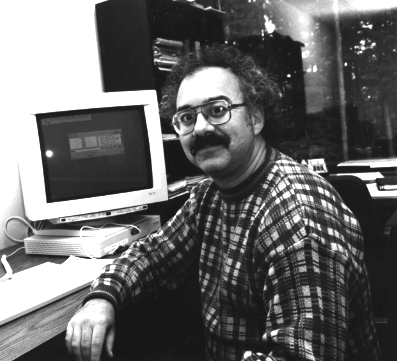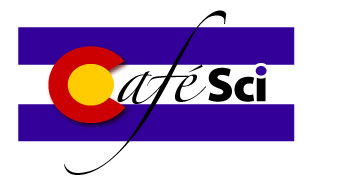Marc Sher is a professor of theoretical physics at the College of William and Mary, in Williamsburg, Virginia. He grew up in Los Angeles, and moved to Boulder to attend graduate school in Physics at CU. He received his PhD from CU in 1980, and had postdoctoral positions at UC Santa Cruz, UC Irvine and Washington University before joining the faculty at William and Mary. He has approximately 100 publications in refereed journals, and four years ago was named a "Fellow" of the American Physical Society, an honor given to 1/2 of 1% of the nation's physicists annually. He has been active with the Forum on Physics and Society and is currently a member of the Committee on the Status of Women in Physics. He teaches a course for non-majors called “Great Ideas in Physics”. His major research interests include:
|
 |
There’s a long summary of Marc’s work at http://www.physics.wm.edu/~sher/research.html |
|
The Topic
In the summer of 2007, on the Switzerland-France border, 200 feet underground, a bunch of protons will be accelerated to very nearly the speed of light and will travel along a 17-mile narrow, circular tunnel. They will collide with a similar bunch of protons traveling in the opposite direction. This will then be repeated 10 million times per second. The debris will be studied by two detectors, each approximately five stories high. The cost: six billion dollars. The goal: to find a subatomic particle called the "Higgs boson".
The Higgs boson is the "Holy Grail" of particle physics. Our entire understanding of the origin of all particle masses depends on its existence. Our entire concept of "unified theories" depends on its existence. My first publication, at CU in 1978, was based on the Higgs boson and its properties and now, over a quarter of a century later, it is hopefully about to be discovered. At the Café I will describe this particle and its importance, and we can discuss why (whether?) it is worth the cost, and the implications for our understanding of Nature if it is (or, gasp, if it is not) discovered.
Mrs. Thatcher and the Higgs Boson
By David Miller Department of Physics and Astronomy, University College, London, UK.
Borrowed from: http://www.phy.uct.ac.za/courses/phy400w/particle/higgs.htm
1. The Higgs Mechanism
Imagine a cocktail party of political party workers who are uniformly distributed across the floor, all talking to their nearest neighbours. The ex-Prime Minister enters and crosses the room. All of the workers in her neighbourhood are strongly attracted to her and cluster round her. As she moves she attracts the people she comes close to, while the ones she has left return to their even spacing. Because of the knot of people always clustered around her she acquires a greater mass than normal, that is she has more momentum for the same speed of movement across the room. Once moving she is hard to stop, and once stopped she is harder to get moving again because the clustering process has to be restarted.
In three dimensions, and with the complications of relativity, this is the Higgs mechanism. In order to give particles mass, a background field is invented which becomes locally distorted whenever a particle moves through it. The distortion - the clustering of the field around the particle - generates the particle's mass. The idea comes directly from the physics of solids. Instead of a field spread throughout all space a solid contains a lattice of positively charged crystal atoms. When an electron moves through the lattice the atoms are attracted to it, causing the electron's effective mass to be as much as 40 times bigger than the mass of a free electron.
The postulated Higgs field in the vacuum is a sort of hypothetical lattice which fills our Universe. We need it because otherwise we cannot explain why the Z and W particles which carry the weak interactions are so heavy while the photon which carries electromagnetic forces is massless.
2. The Higgs Boson
Now consider a rumour passing through our room full of uniformly spread political workers. Those near the door hear of it first and cluster together to get the details, then they turn and move closer to their next neighbours who want to know about it too. A wave of clustering passes through the room. It may spread to all the corners or it may form a compact bunch which carries the news along a line of workers from the door to some dignitary at the other side of the room. Since the information is carried by clusters of people, and since it was clustering that gave extra mass to the ex-Prime Minister, then the rumour-carrying clusters also have mass.
The Higgs boson is predicted to be just such a clustering in the Higgs field. We will find it much easier to believe that the field exists, and that the mechanism for giving other particles is true, if we actually see the Higgs particle itself. Again, there are analogies in the physics of solids. A crystal lattice can carry waves of clustering without needing an electron to move and attract the atoms. These waves can behave as if they are particles. They are called phonons and they too are bosons.
There could be a Higgs mechanism, and a Higgs field throughout our Universe, without there being a Higgs boson. The next generation of colliders will sort this out.
